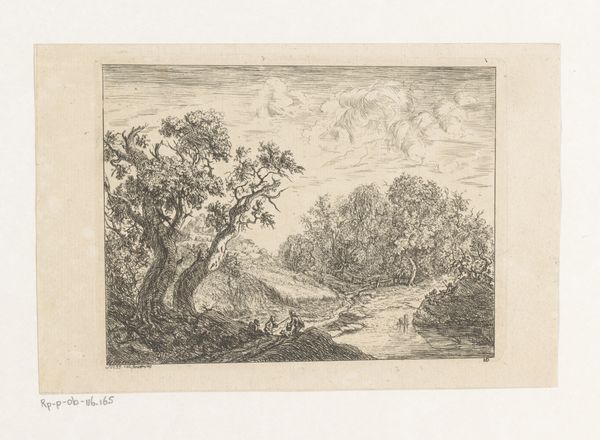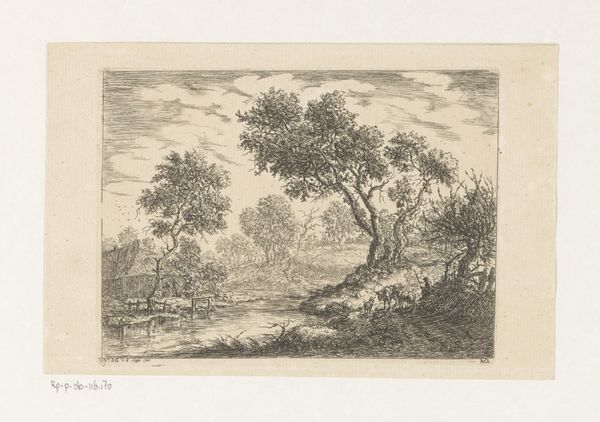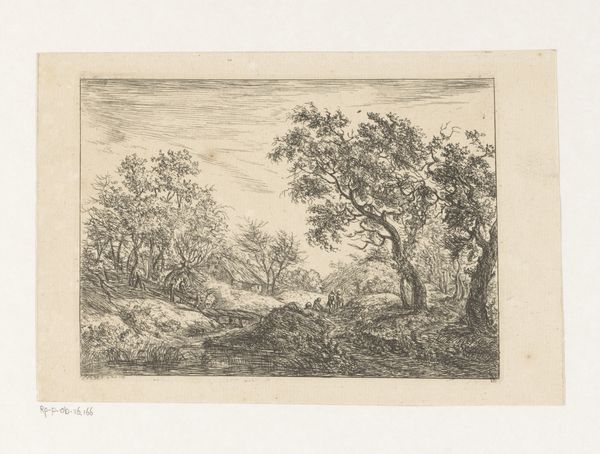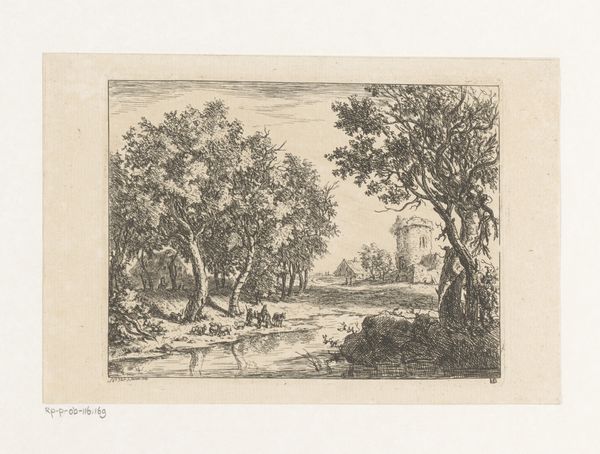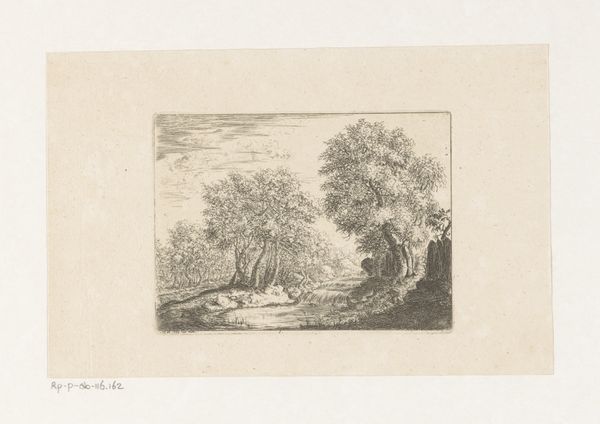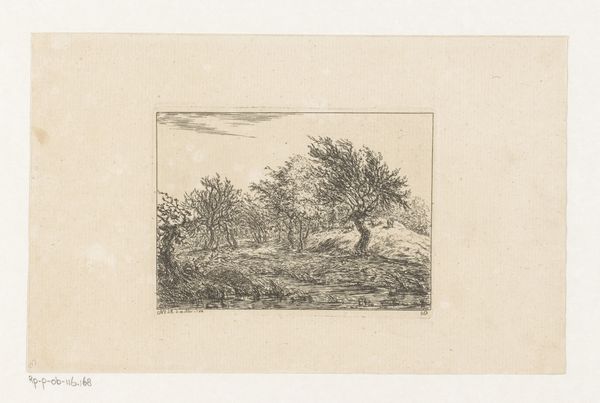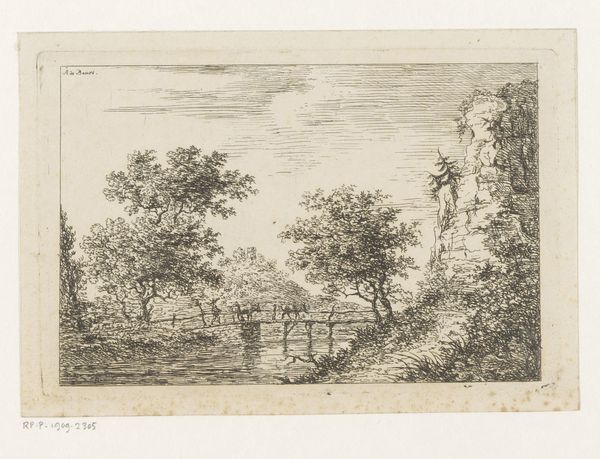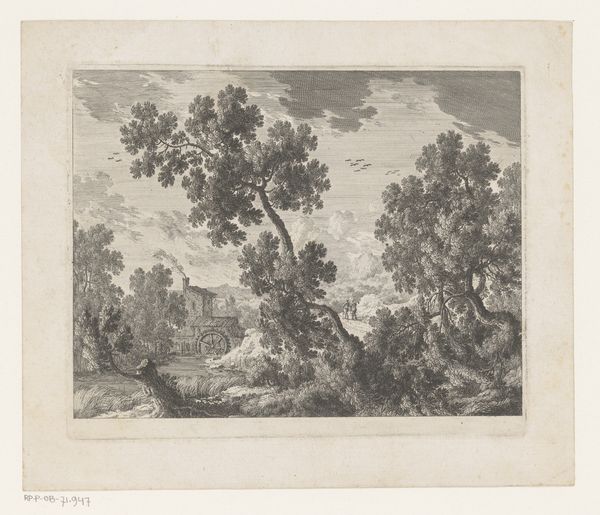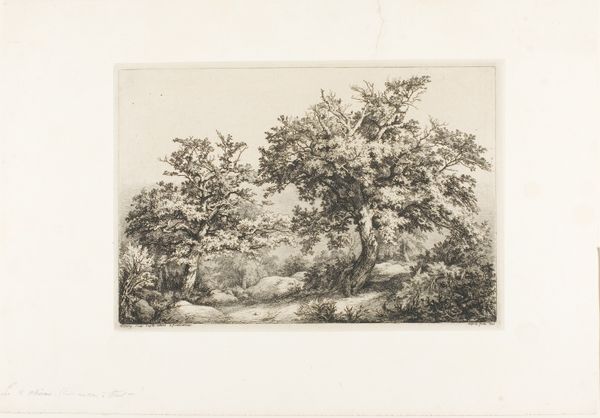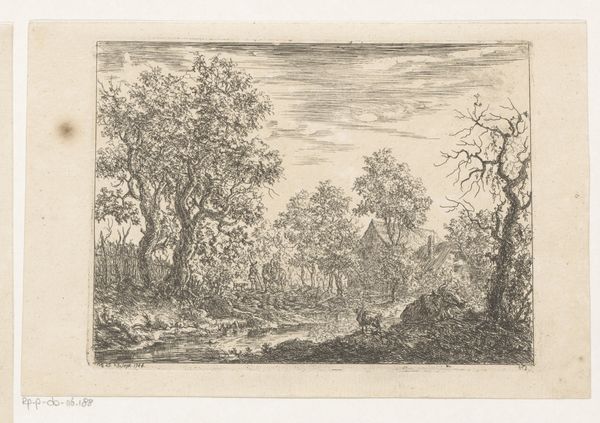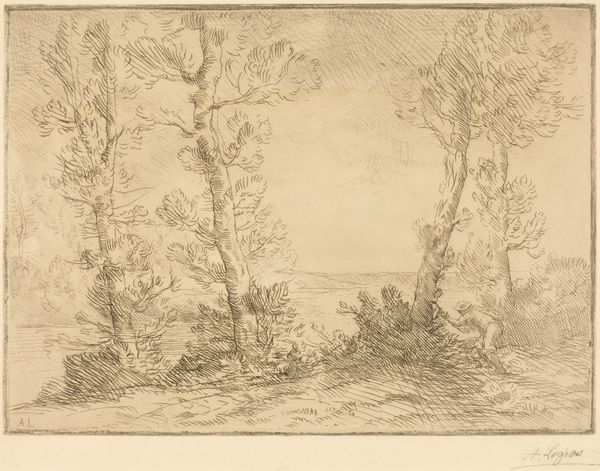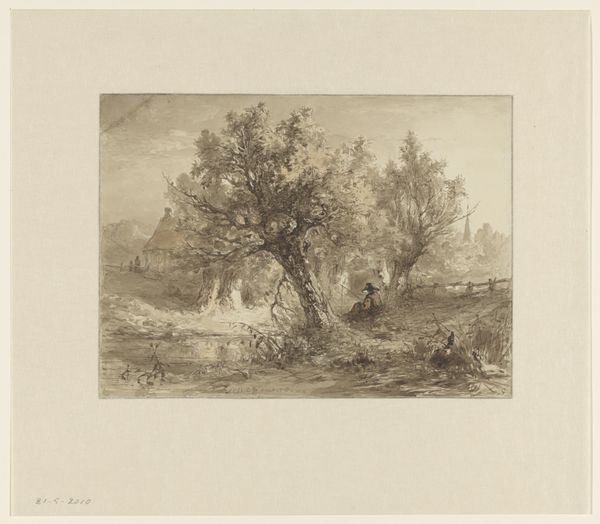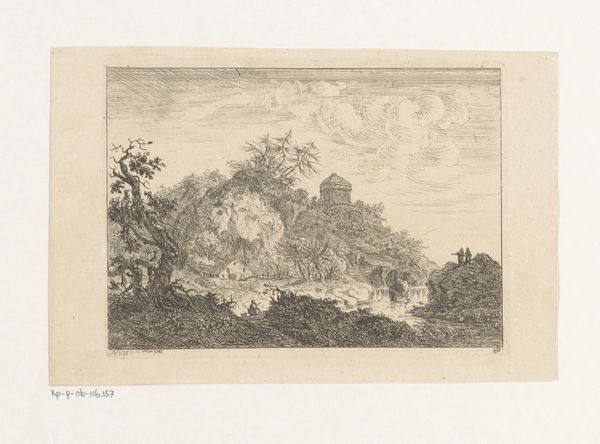
Landschap met boerderij, op de voorgrond twee mannen in een boot Possibly 1744 - 1748
0:00
0:00
etching
#
baroque
#
dutch-golden-age
#
etching
#
landscape
#
etching
#
pencil drawing
#
line
#
genre-painting
#
realism
Dimensions: height 134 mm, width 183 mm
Copyright: Rijks Museum: Open Domain
Editor: So, here we have "Landscape with Farmhouse, with two Men in a Boat in the foreground," an etching dating back to possibly 1744-1748, by Christian Ludwig von Hagedorn. There is a humble and calming effect. The cross-hatching is very visible. What do you see in it? Curator: I am drawn to the material reality of this etching. Consider the process. Etching involves labour – the artist manipulates metal, acid, and ink. This wasn't some effortless creation from a master. Look at the very lines of the etching; each one signifies the hand, the tool, the deliberate act of marking. It invites us to contemplate the labor involved in its creation and the availability of materials. What about the availability of paper and ink for broader distribution of landscape? Editor: That's interesting; I hadn’t considered that. It makes me think about who would have had access to such a print and its subject matter. Curator: Exactly! This genre of work challenges traditional hierarchies that place painting above printmaking and “fine art” above scenes of daily life. Consider the market for these etchings. Were they aimed at a wealthy elite looking for picturesque scenes, or a rising middle class interested in images reflecting their own environment and status through the consumption of art. How might these affordable scenes influence the concept of Dutch identity and social aspirations? Editor: I suppose it also democratized art in a way? More people could own something like this than an original painting. Curator: Precisely! The etching embodies an expanded access to art. It challenges traditional boundaries and connects art with a wider audience by embracing its material means. Editor: That’s given me a new appreciation for this seemingly simple landscape. It makes me want to look more at the art itself rather than solely relying on traditional narratives around high art. Curator: It is key to understand that materials and modes of production offer valid means to view any kind of art in the modern world, not only painting, which contributes to our wider understanding of the time periods that produced such fine works.
Comments
No comments
Be the first to comment and join the conversation on the ultimate creative platform.
